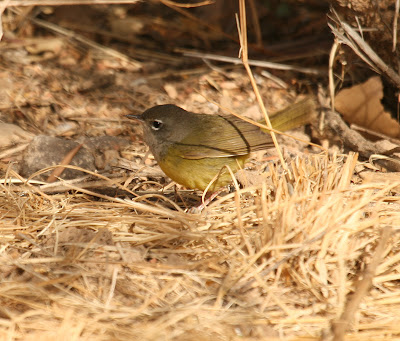I arrived at my oasis early this morning to find an exhausted
Townsend's Warbler. I expected it to topple over, belly up, legs pointed skyward, while I was taking this photo, but it seemed to recover throughout the day.
The oasis is still crammed with birds, but at least the insect population seems to be increasing, so I know they have food and water. Have many flycatchers, and I spent considerable time trying to ID them. I've decided, but correct me if I'm wrong, that this one is a Willow.
At 105° today (and my sister said it was hotter yesterday), I'm thankful I'm not finding any dead birds (since that Yellow-headed Blackbird on April 25).
With my storage tanks all dry or nearly dry, I'm paranoid about wasting a drop of water. However, somehow today I took a nap and left water running into one of my water features. Topped it off, which I hadn't planned to do. But the birds loved it. This MacGillivray's Warbler was one of several that spent hours in it. Flycatchers, including the one above, fought for prime perches above the water.
I've seen these W. Black-necked Garter Snakes catch frogs often, but I always assumed they swallowed them. Guess not always. Don't click on this photo if you're squeamish.











.jpg)

.jpg)









































